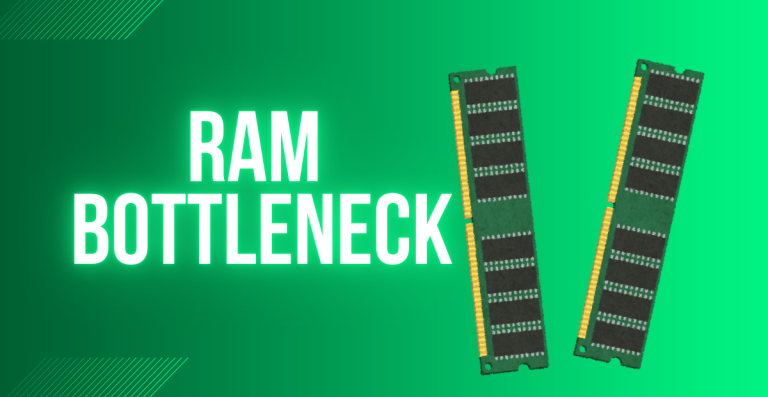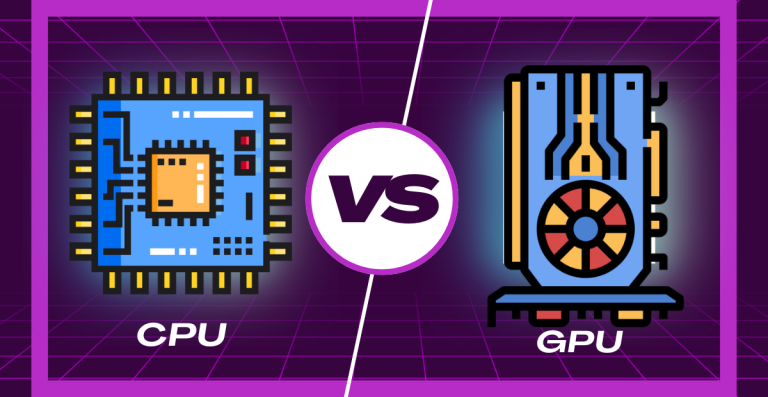Most Influential FPS Games That Shaped the Gaming Industry

First-person shooter (FPS) games have changed the gaming world in many ways. These Most Influential FPS Games let you see the action through your character’s eyes, making you feel like you are truly inside the game. The mix of fast reflexes, quick aiming, and exciting moments is what makes FPS games fun and popular.
In the early days, FPS games had simple graphics and basic sounds. But over time, they got better. Today, we have games with smooth graphics, smart enemies, deep stories, and new technology that make everything feel real. FPS games have grown a lot, going from tiny projects to huge titles loved by millions.
These games did not just entertain us. They helped shape gaming culture. Many people play them online, share videos, and take part in competitions. The way these games use cameras, weapons, and player movement became the base for many future games. Their legacy continues to inspire new game makers and fans all around the world.
How To Select the Most Influential FPS Games?
A big part of picking the right game depends on how much you enjoy fast gunplay and the feel of being in the middle of action from a first-person view. Some players like games that focus more on shooting skills and reaction time, while others may enjoy deeper stories or unique worlds.
This list is focused on games where shooting and aiming from a first-person view is the main part of the gameplay. Games that mix in too much puzzle-solving, heavy exploration, or role-playing have been left out so you can focus on pure FPS fun. If you enjoy direct action, cool weapons, and a feeling of being inside the game, these are the kinds of titles you might enjoy most.
When choosing your favorite FPS, think about what kind of experience you enjoy, whether it’s fast-paced shooting, a rich story, or a strong atmosphere, and you’ll likely find one on this list that matches your taste.
Wolfenstein 3D (1992)
Wolfenstein 3D, released in 1992 by id Software, is often called the first real first-person shooter. It laid the foundation for the FPS genre. You play as B.J. Blazkowicz, a captured Allied spy during World War II, trying to escape a Nazi stronghold. The game puts you directly in his eyes, using a first-person view that was new and thrilling at the time.
The gameplay is simple but intense. You move through mazes, shoot enemies, and look for keys and secret rooms. There were no cutscenes or complicated mechanics, just fast action and reflex-based shooting. The game used textured 3D walls and digital sound effects, which felt groundbreaking in 1992. It ran smoothly on basic computers, helping it reach millions of players.
Wolfenstein 3D was a major commercial success and became a classic. Critics praised it for its speed and unique style. It didn’t just entertain, it proved that first-person shooters could be a major part of gaming. Many future FPS games borrowed their ideas, especially Doom, which came just a year later.
Doom (1993)
Doom, developed by id Software and released in 1993, changed first-person shooters forever. It wasn’t just a game, it was a whole experience. You play as a space marine, often just called “Doomguy,” who is trapped on Mars fighting off demons from Hell. The game’s first-person view makes you feel like you’re right there in the middle of all the chaos.
The action is fast and thrilling. You blast enemies with powerful weapons, from shotguns to the iconic BFG. Doom introduced true multiplayer deathmatch, which let players fight each other over a local network, a big deal back then. It also had a massive modding community. Fans could create and share custom levels, which helped the game stay popular for years.
Doom was a huge success both critically and commercially. It pushed PC hardware to its limits and inspired developers everywhere. It also showed how important game feel and pacing were to FPS titles. Even today, the influence of Doom can be seen in both retro-style shooters and modern competitive games.
Quake (1996)
Quake wasn’t just another shooter, it was a leap into full 3D gaming. Released in 1996 by id Software, this game introduced players to dark, gothic worlds filled with terrifying monsters and moody environments. For many, it was their first experience with smooth, fully 3D movement in an FPS.
You played as a lone soldier fighting through eerie levels using powerful weapons like the nailgun and rocket launcher. The atmosphere was thick, and the sound design made everything feel tense. But Quake’s biggest achievement was in its tech. It used a brand-new engine that supported real-time lighting and 3D models, setting a new standard for all games that came after.
Quake also helped launch the world of online competitive gaming. Its multiplayer mode laid the foundation for modern esports, and mods like Team Fortress began here. Critically praised and commercially successful, Quake proved how far FPS games could go when gameplay, visuals, and community all came together.
GoldenEye 007 (1997)
When GoldenEye 007 was released in 1997, it forever changed the landscape of first-person shooters, especially for consoles. Developed by Rare and published for the Nintendo 64, it wasn’t just another Bond game; it set the bar for FPS titles on consoles with its revolutionary mechanics.
You play as James Bond, tasked with stopping a deadly satellite weapon from causing global chaos. What set GoldenEye apart wasn’t just its single-player campaign; it was the multiplayer experience. For the first time, you could battle your friends in a split-screen mode, making it a must-play at parties. The controls were finely tuned for the N64’s joystick, something that helped make the game’s mechanics smooth and intuitive.
GoldenEye’s impact is seen in its influence on level design, where each mission had multiple objectives, allowing for replayability. It also brought a more tactical approach to FPS gameplay, which later became a staple in games like Call of Duty. With a mix of stealth and action, GoldenEye not only defined an era but also proved that FPS games could be both fun and complex.
Half-Life (1998)
Released in 1998, Half-Life took the FPS genre to a whole new level, blending fast-paced shooting with deep, immersive storytelling. Developed by Valve and powered by a highly advanced engine for its time, this game made a name for itself by integrating narrative elements directly into the gameplay, something that was rarely seen in FPS games at that point.
As the player, you step into the shoes of Gordon Freeman, a scientist trying to survive a catastrophic experiment gone wrong at the Black Mesa Research Facility. The game’s world unfolds in real time, with no cutscenes interrupting the action.
The environment itself tells the story, using clever environmental design and subtle cues to immerse players in its complex narrative. This was a breakthrough in how FPS games could tell a story, making the player feel like they were part of the action.
Beyond storytelling, Half-Life raised the bar for AI, offering enemies that reacted intelligently to your actions. The success of Half-Life helped shape the future of story-driven FPS games and led to the development of iconic sequels and spin-offs. Its revolutionary approach to both storytelling and gameplay solidified its place as a game that not only advanced the FPS genre but also redefined it.
Half-Life (1998)
When Half-Life launched in 1998, it wasn’t just another first-person shooter revolutionized the way we play FPS games. Developed by Valve, this game introduced a whole new approach to how a shooter could blend action and storytelling. Unlike most FPS games at the time, Half-Life didn’t stop for long cutscenes. Instead, the story played out around you, keeping you immersed in the action.
You play as Gordon Freeman, a scientist caught in the middle of a disaster at the Black Mesa Research Facility. The game’s design focused on making the world feel real, with detailed environments and characters that didn’t just serve as targets but played important roles in the unfolding events. Half-Life’s AI, which made enemies react intelligently to your actions, was something players had never seen before in a shooter.
Another game-changing element was its seamless mix of combat and puzzles. It wasn’t just about shooting your way through enemies; Half-Life encouraged problem-solving and thinking ahead. It wasn’t just a gameit was an experience that set the bar for how FPS games could tell stories and engage players on a deeper level.
Unreal (1998)
Unreal was a game that pushed the limits of what we thought was possible in video games. Developed by Epic Games in 1998, it introduced the world to incredibly realistic graphics and immersive environments that stood out even by today’s standards. Unreal was one of the first games to truly deliver an atmospheric world where every corner felt alive.
The game was famous for its stunning visuals, including detailed textures and realistic lighting effects, setting a new standard for FPS games. But it wasn’t just about looking good; Unreal also innovated with its fluid movement and combat mechanics. The weapons were diverse, from the classic rocket launcher to the devastating flak cannon, each offering a different playstyle.
Beyond the visuals, Unreal had a massive impact on game engines. The Unreal Engine, created for the game, became a tool used by countless developers for years to come, influencing everything from level design to game physics. Its legacy still lives on today in countless modern games.
Medal of Honor: Allied Assault (2002)
When Medal of Honor: Allied Assault hit the shelves in 2002, it quickly became one of the most iconic WWII first-person shooters of its time. Developed by 2015, the game took players into the heart of World War II, offering a cinematic experience that felt like a Hollywood blockbuster. Set across various locations, from the beaches of Normandy to the streets of Berlin, it immersed players in historical events with remarkable detail.
What set this game apart was its commitment to realism. From the sound of gunfire to the chaos of battle, Allied Assault used cutting-edge audio and visual techniques to create an unforgettable war experience. The Normandy beach landing, in particular, became one of the most memorable and intense sequences in FPS history, giving players a true sense of what it was like to fight in WWII.
The game’s influence didn’t end with its storytelling. Medal of Honor helped pave the way for future FPS titles, including the immensely successful Call of Duty series. It showed that players were ready for immersive, history-based shooters, and its impact can still be felt in today’s military FPS games.
Metroid Prime (2002)
Metroid Prime took the gaming world by surprise in 2002 by blending first-person shooting with action-adventure elements. Developed by Nintendo, this game was a bold experiment, fusing exploration and combat in ways that hadn’t been seen before. Unlike traditional FPS games, Metroid Prime focused heavily on atmospheric exploration, offering a vast alien world to explore rather than just shooting enemies in a linear path.
Playing as Samus Aran, players would journey through the planet Tallon IV, uncovering ancient secrets while fighting off hostile creatures. The game’s use of scanning and environmental puzzles added layers of depth to the typical FPS experience. It wasn’t just about firing weapons; it was about understanding the world around you, deciphering alien technology, and unlocking new abilities.
Despite its unconventional approach, Metroid Prime was a huge success, with many praising its immersive world-building and innovative gameplay mechanics. The game’s influence can still be seen in modern FPS titles that combine exploration with combat, showing how Metroid Prime helped evolve the genre.
BioShock (2007)
Released in 2007, BioShock is one of those rare FPS games that transcends the genre. Developed by Irrational Games, it combined intense first-person combat with deep philosophical themes and an unforgettable story. Set in the underwater city of Rapture, BioShock took players on a journey filled with moral dilemmas, philosophical questions, and a chilling atmosphere.
The game’s most famous feature is the Plasmid system, which allowed players to modify their abilities. Whether you were shooting electricity from your fingertips or summoning swarms of bees, BioShock offered unique combat options that added depth and creativity to the gameplay. But it wasn’t all about the action—BioShock also featured a narrative that challenged players’ perceptions of choice and consequence, leading to a story that felt deeply personal and thought-provoking.
Not only did BioShock receive critical acclaim for its story and gameplay, but it also proved that FPS games could tackle complex issues, offering an experience that was both entertaining and intellectually stimulating. It set a new standard for narrative-driven FPS games, influencing titles like Spec Ops: The Line and Prey.
Call of Duty 4: Modern Warfare (2007)
In 2007, Call of Duty 4: Modern Warfare changed the landscape of FPS games. Developed by Infinity Ward, it was a departure from the WWII settings of previous Call of Duty titles, bringing players into the present day with modern military conflicts. The game’s introduction of a more realistic, contemporary warfare setting quickly made it one of the most influential FPS games of all time.
What made Modern Warfare stand out wasn’t just its setting—it was its masterful balance between cinematic storytelling and fast-paced multiplayer action. The single-player campaign introduced players to a gripping narrative that was as intense as it was immersive. Meanwhile, the multiplayer mode redefined competitive gaming, introducing a progression system with perks, unlockables, and a sense of constant improvement.
Modern Warfare’s influence can be seen across the FPS genre, setting the standard for multiplayer shooters. Its design and mechanics helped shape the way we play FPS games today, with numerous titles attempting to replicate its success.
Key Innovations of Influential FPS Games
FPS (First-Person Shooter) games have evolved a lot over time. From their simple beginnings to their current cutting-edge technology and storytelling, these games have shaped the gaming world in many ways. Some of the most important changes are in multiplayer design, narrative storytelling, and their impact on culture and technology.
Advancements in Multiplayer Design
Multiplayer FPS games have become a huge part of gaming. Here’s how different games helped improve multiplayer experiences:
- Doom’s Deathmatch and Online Competitive Gaming: Doom was one of the first games to introduce Deathmatch, where players fight each other online. This helped bring multiplayer into the spotlight and made competitive gaming popular.
- Quake’s Client-Server Architecture: Quake took multiplayer gaming a step further by introducing a client-server system. This made the game run more smoothly for players all over the world, helping online gaming grow even more.
- Halo’s Console Multiplayer Innovation: Halo made multiplayer on consoles more fun by allowing players to join games with friends on the same system. It helped make local multiplayer gaming even more popular.
- Counter-Strike’s Team-Based Objective Model: Counter-Strike introduced a new way of playing with team-based objectives. Instead of just trying to kill everyone, players worked together to complete specific goals, which made the game more strategic.
Impactful Narrative Storytelling
FPS games are not just about action; they also tell great stories. Here’s how different FPS games have changed storytelling:
- Half-Life’s Seamless Story Integration: Half-Life was one of the first games to tell its story while you were playing, without interrupting the action with cutscenes. This made the story feel more natural and engaging.
- BioShock’s Environmental Storytelling: BioShock told its story through the environment, allowing players to learn about the game’s world by exploring. This made the game’s story more immersive.
- Call of Duty’s Cinematic War Narratives: Call of Duty introduced cinematic war stories that made players feel like they were in a movie. These stories brought more drama and emotion to the gameplay.
- Portal’s Narrative Mechanisms Through Gameplay: Portal used its puzzles to tell a story. As you solved puzzles, you uncovered more about the game’s world and characters, turning gameplay into a way of learning the story.
Cultural and Industry Influence
FPS games have had a big impact on gaming culture and the gaming industry. Let’s see how:
- Shaping Esports and Online Communities: FPS games helped make esports a huge thing. Quake’s Red Annihilation tournament was one of the first big gaming competitions, and it helped make competitive gaming popular.
- Driving Technological Progress: FPS games pushed technology forward. Doom helped boost computer sales because it needed better PCs to play. Games like these made computers faster, which improved gaming for everyone.
Shaping Esports and Online Communities
FPS games played a big part in the rise of esports and the creation of online communities.
- The Birth of Esports with Quake: Quake was one of the first games to have a major esports tournament, called Red Annihilation. It showed that competitive gaming could be big and helped bring esports into the mainstream.
- Counter-Strike’s Evolution into a Global Esport: Counter-Strike became one of the most popular esports games in the world. It helped create professional gaming leagues with huge prize money, drawing millions of players and fans worldwide.
- Influence on Online Community Features: Games like Doom and Quake introduced clans, or groups of players who could compete together. Today, community platforms like Discord and Twitch thrive because of the foundations laid by these early FPS games.
Driving Technological Progress
FPS games have always pushed the limits of technology. Here’s how they’ve influenced tech:
- The Doom Effect on Hardware: Doom helped sell more computers in the 1990s because it required better hardware to run. This helped make PCs faster and more powerful, improving gaming for everyone.
- Graphics Card Advancements for FPS Games: As FPS games improved, they needed better graphics cards. Games helped push the development of faster and more powerful graphics cards, making game visuals better than ever.
- Motion Capture Technology: FPS games like Call of Duty helped develop motion capture technology, which made the character movements look more realistic. This made the game world feel more alive and immersive.
- Virtual Reality’s Evolution in FPS: Virtual Reality (VR) is changing how we play FPS games. Half-Life: Alyx used VR to create an even more immersive gaming experience. This could be the future of FPS games, allowing players to interact with the world like never before.






